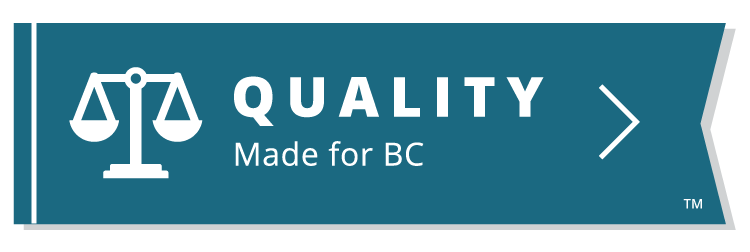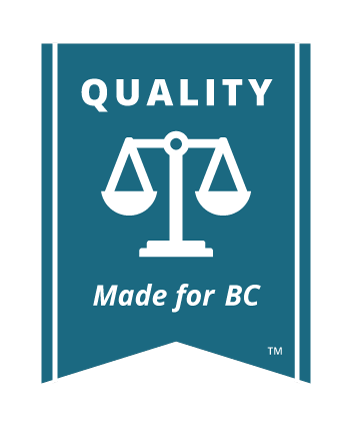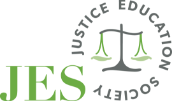Documents as Evidence
Documents can also be evidence in court.

Key Terms
A “document” has a broad meaning under Rule 1-1. In general, a document is a physical or electronic record of information recorded or stored by means of any device, and includes photographs, films, and sound recordings.
When thinking about what type of evidence you can use to prove your case, remember that a document is anything that contains information, such as a memo, invoice, letter, drawing, transcript, or information on a computer hard drive, or CD.
In order to use a document at trial, you must have included that document on your list of documents. For more information on preparing a list of documents, see Discovery.
Proving Documents at Trial
At trial, a document can be put into evidence:
- To prove that it exists
- To prove its contents
To prove that a document is real (to “authenticate” it), the person who created the document can be called as a witness to give evidence about it. Or, the document’s authenticity can be admitted, for example, under a notice to admit. (see the section on Admissions)
If a document is put into evidence to prove its contents, it will be considered hearsay, and therefore not admissible, unless it falls within one of the exceptions to the hearsay rule. (see the discussion on Hearsay)
The use of documents as evidence is covered by the “best evidence” rule. This means that you generally need to submit the original document if you want to prove its contents. If the original document cannot be produced, you may need to explain to the court why you are submitting a copy – the original may be lost, or destroyed, or someone else may have it.
Specific Documents
During the course of litigation, you may have to introduce many documents into evidence, such as business records (for example, an invoice) or a financial institution record (for example, a bank statement). The BC Evidence Act will give you information about how these documents can be admitted into evidence.
Business records are discussed in s. 42 of the Evidence Act. A statement of a fact in a business record is admissible as evidence of the fact if:
- The document was kept or made in the usual course of business and
- It was in the usual and ordinary course of business to record the statement of fact in the record
You will need to call the person responsible for making and keeping the business records to give evidence that the document is authentic, unless authenticity has been admitted. Medical records fall into the category of business records.
Records from financial institutions (a statement from a bank) are discussed in s. 34 of the Evidence Act. A bank manger or accountant can come to court or provide an affidavit confirming that the bank record is authentic.
Government records are discussed in s. 25, 28-33 of the Evidence Act. These sections deal with both proving authenticity and the contents of various types of government records.
The Motor Vehicle Act (s. 82 and 82.1), provide that certain ICBC records are “self- authenticating”, meaning that they do not need to be authenticated by a witness or by admission.
These sections also provide that statements of fact contained in these records are admissible as evidence of those facts.
Entering Documents Into Evidence
When the evidence has been admitted into court in a trial, it becomes an exhibit. Certain steps must be followed in order to get a piece of evidence marked as an exhibit in the trial.
In this example, you are the plaintiff who wants the court to admit (accept) a signed contract as an important piece of evidence. You are representing yourself and have called a witness to give evidence that they saw the defendant sign the contract. You have disclosed the contract in the list of documents to the defendant.
- Show the contract to the other party’s lawyer. Tell the judge that you have disclosed this document to the other party before trial (or have provided them with a copy)
- Show the contract to the witness
- Ask the witness questions, leading them to confirm that they saw the defendant sign the contract and that the signature is the defendant’s
- Ask the judge to admit the contract into evidence as an exhibit. (For example, say: “Mister or Madam Justice, I’d like to offer this contract as the next exhibit.”) If the other party does not object to the document being entered into evidence as an exhibit, the judge will confirm that it is an exhibit and give it an exhibit number
Affidavits

Key Terms
An affidavit is a written declaration of facts that the person (the deponent) swears or affirms is true.
Affidavits are primarily used in chamber hearings. Affidavits are rarely used in regular trials because the evidence is usually entered in other ways, such as through the evidence of witnesses. A witness who gives evidence in the trial must generally do so in person so that they can be cross-examined on the evidence by the other party. In some cases, however, the court will allow evidence to be given by affidavit if the deponent is not able or available to appear in court or if it would be too expensive to bring the deponent to the trial. See Affidavits.
The statements made in the affidavit must be relevant to the case and it must contain only facts, not opinions. For example, in your affidavit, you can say that you saw the plaintiff’s car drive through an intersection without stopping at a red light because that is a fact. You cannot say that the plaintiff is a bad driver because that is just your opinion.
You can attach important documents to your affidavit. These attachments are called exhibits. The affidavit itself must refer to the exhibit and confirm that it is a true copy of the original.
Transcripts
You can also use transcripts (written records) from examinations for discovery, interrogatories, and pre-trial examination of witnesses as evidence.
You can use evidence given from the other side in an examination for discovery against that person. This evidence is “read in” to the Court record. In this way, if you obtain a good admission in discovery, you can let the Court know about it.
You have to let the other side know what questions and answers are going to be read. They may ask that the Court consider other questions and answers too if they provide needed context. If you read any part of the examination for discovery, the Court is allowed to review the entirety of the transcript.
In addition to being read in as admission, a transcript for discovery can be used to challenge a witness’s credibility. You might use a transcript from an examination for discovery if a witness gives different evidence at trial than they did in the examination for discovery. Your purpose will be to show that the witness is not credible because they gave two different versions of the story.
For example, the witness may have said under oath in an examination for discovery that he went through the intersection when the light was amber. If he states at trial that he stopped when the light changed to amber, he has given two different versions of the event.
At trial, you can remind the witness that he made the prior statement by reading in that part of the examination for discovery transcript and having them admit that they made that previous statement under oath. If the witness cannot explain the inconsistent statements, it will be evidence that the witness is not reliable.
Interrogatories can be used at trial in the same way as examination for discovery transcripts. For more information on examination for discoveries and interrogatories see Discovery.
Pre-trial Examination of Witnesses
In addition to examining another party in the lawsuit, you can sometimes examine a witness before trial. For more information on the pre-trial examination of witnesses, see Discovery.
The court may allow a transcript from a pre-trial examination to be submitted as evidence at trial if a witness:
- Is dead
- Is unable to come to court to testify because of illness, age, imprisonment, or
- Cannot be forced to attend by a subpoena
The use of recorded testimony (under oath) at trial is generally described in Rule 12-5(54).







 JusticeEducation.ca
JusticeEducation.ca JusticeEd
JusticeEd /JusticeEducation
/JusticeEducation